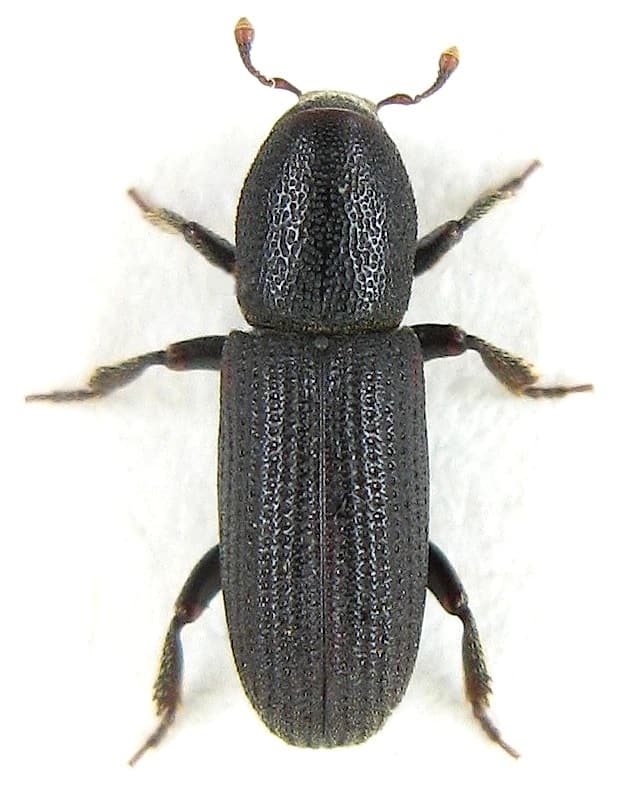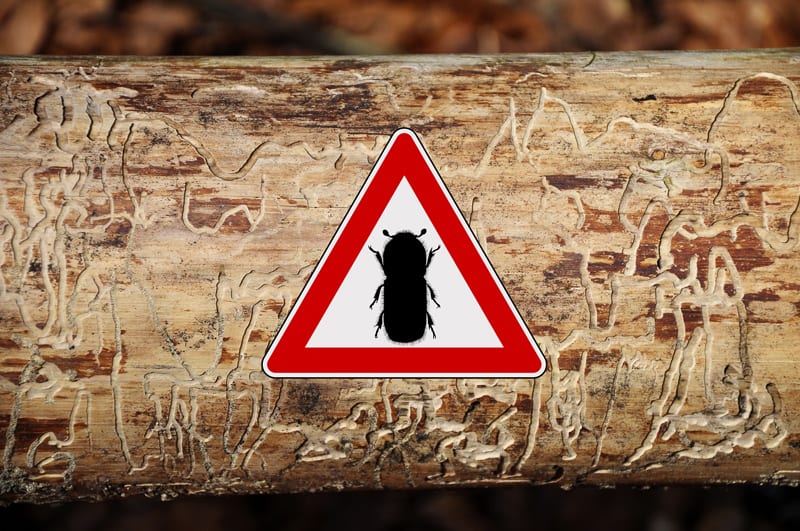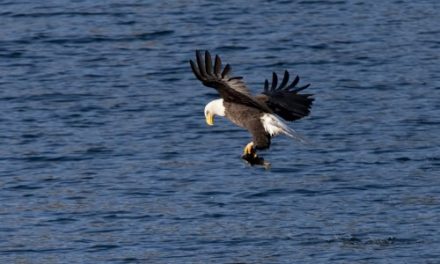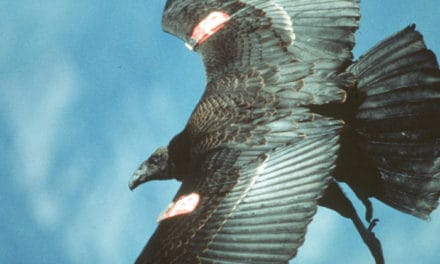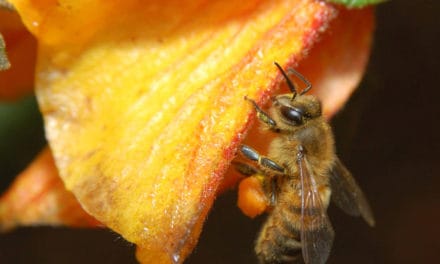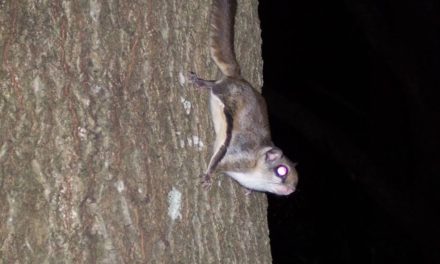
By Melissa Wynn
After years of drought in California, our forests became more and more stressed. The weakened condition of our beautiful trees have made them highly susceptible to bark beetle infestation. The bark beetles currently attacking our forests are all native. These species include the mountain pine beetle, fir engraver beetle, western pine beetle, Jeffrey pine beetle and pine engraver beetles.
Under normal conditions healthy conifer (any tree that produces seeds in cones) trees are able to fend off the destructive beetles by producing enough resinous pitch to drown out the beetles trying to enter. Unfortunately their ability to produce the pitch is greatly reduced when water is in short supply.
To further exacerbate the situation, bark beetles have extreme population increases when food (i.e. millions of stressed trees) is plentiful. Even healthy conifers can’t fend off the beetles when these population explosions occur and the beetles attack en mass. In addition, bark beetles often carry fungi that can further depress the tree’s natural defenses. Densely forested areas also cause the trees to compete for what little water is available, weakening them further. This is the perfect storm that is killing trees throughout Mountain Valley Living territory and beyond in startling numbers.
Are Your Trees At Risk?
To determine if your trees are at risk the U.S. Forest Service recommends the following. First you need to determine the species of your trees and evaluate their susceptibility. The number of pine needles per bunch is very helpful in identifying different species.
Ponderosa Pine needles are 2-3 to a bundle, ranging from 3-10 inches in length. Cones are 3-5 inches long and armed with small spines. This species is widespread in the lower and middle elevation forests.
Jeffrey Pines are very similar to Ponderosa Pine as needles grow 2-3 in a bundle. Cones are larger and stouter (5-9 inches) and have in curved spines. These pines are also common throughout our home range.
Most popular for firewood, Lodgepole Pine have two needles per bundle, 1-3 inches long. The prickly, small, ¾-2 inch long cones have short stalks and can stay on the tree for many years.
Favored for their large, impressive cones, Sugar Pine needles grow 5 to a bundle. Upper branches on large trees are often sprawling and turned upward.
Several Fir trees are also on the bark beetle menu including Red, White and Douglas Fir. Needles on fir trees are not in bundles but grow individually from the stem or branch; the shape of the needles however differs by species.
Unfortunately most Pine, Fir, Pinyon and some Cedar trees are susceptible to one or more bark beetle species when under stress. If you live in drought ridden Northern California and have trees with needles and/or cones on your property, you are probably at risk. The crown or top of the trees can often help evaluate how stressed they are. If the crown is browning and appears in poor health, or the tree seems to be dying from the top down, it is highly stressed and therefore susceptible or already subject to bark beetle attack.
More detailed descriptions of both the beetles and the trees they attack are available from the Forest Service online at www.fs.usda.gov/Internet/FSE_DOCUMENTS/stelprdb5384837.pdf.
Have your trees been attacked?
Signs and symptoms of a bark beetle attack can be similar regardless of the tree or beetle species involved, however a few are a bit more specific. Poor crown health, pitch tubes and boring dust are the main and most visible indicators. Galleries beneath or on the under side of the bark offer further confirmation upon closer inspection.
Pitch tubes are small holes in the trunk or holes that are covered with popcorn shaped eruptions of pitch. Unsuccessful attacks produce a whitish pitch over the tube showing the tree was able to block the beetles with it’s natural defenses, healthy white pitch. A successful attack is accompanied by reddish pitch showing the beetles were able to bore inside, their waste giving the pitch the rusty hue. The size of the pitch tubes vary with beetle species but reddish pitch tubes are a clear indictor of a bark beetle
infestation.
Boring dust is like a dehydrated version of the rusty pitch tubes. Drought ridden trees may simply not have enough water to produce a resinous pitch to fight the beetles, leaving them free to bore inside kicking out the reddish dust as they go. Some tree species, including several fir trees may show boring dust near the base of the tree as well as on the trunk and at attack sites.
Galleries are the trails or tunneling tubes left in the wood beneath the bark or on the underside of the bark itself by the beetles as they bore inside. If you peel a piece of bark near boring dust or pitch tubes you are almost certain to find these often fatal tree injuries.
What Can You Do?
Once a tree is successfully attacked or infested by bark beetles there is usually nothing you can do to save it. Bark beetles kill trees as we can see by looking at our forested areas all over California.
Like with many things in life, an ounce of prevention is worth a pound of cure. Watering your trees during times of drought is key. Keeping stands of trees thinned to reduce competition promotes better tree health as well. Removing any currently infested trees as well as any downed and debris will help prevent the beetles from spreading to other healthy trees nearby.
Some insecticides can also be used to prevent bark beetles but there are none known to eradicate them once the tree is infested.
Learn more about bark beetles and the trees they attack at www.fs.usdagov/Internet/FSE_DOCUMENTS/steprdb5384837.pdf
Facts courtesy of www.fs.usda.gov
Editor’s note: We had two trees killed in our yard by bark beetles. We contacted Terminix in Chico and they were able to save the third infected Lodgepole pine tree, which our deck is built around.
